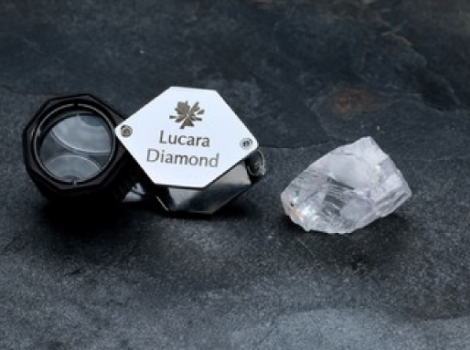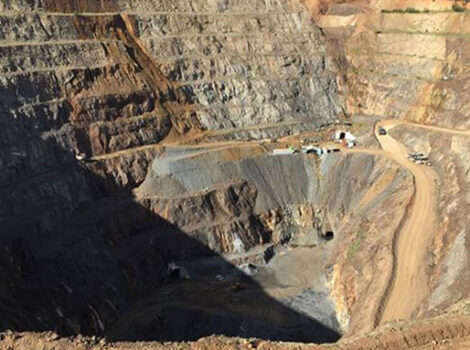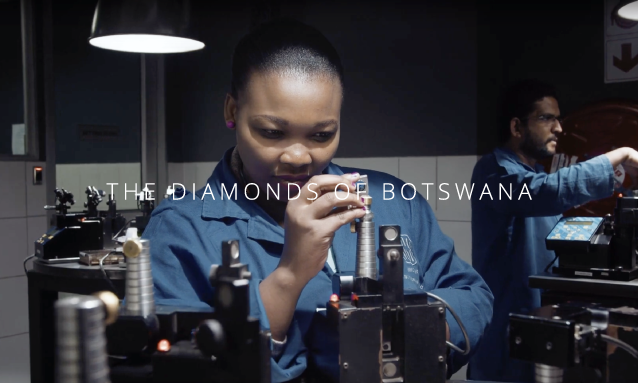
By nearly all accounts when it comes to the diamond industry, Botswana is a success story. Because of diamonds, the landlocked, arid country of 2.3 million people moved from being one of the poorest countries in Africa to one of the most successful medium-sized economies with more than 80% of diamond profits staying within the country. Much of this income benefits citizens through free education, free healthcare, an expansion of local jobs in the diamond industry, and plan for a more diversified economic future.
This information and more is included in a 14-minute film about Botswana’s relationship with the diamond industry produced by Eco-Age, a “sustainability consultancy” that works with companies to help them adopt sustainable practices then partners with them to market these practices to a wider public. The company is founded by Livia Firth with most of its partnerships in the fashion industry. In the jewellery and watch industry Eco-Age is perhaps best-known for its partnership with the luxury brand, Chopard, to produce an annual “Green Carpet” sustainable high jewellery collection and to help the company develop a system to acquire all of its gold from ethical sources.
The film, titled “Fashionscapes: The Diamonds of Botswana,” is billed as a documentary. However it is perhaps better defined as a promotional film, created in partnership with the government of Botswana and various players in the country’s diamond industry. This includes the De Beers Group and Lucara Botswana, a diamond mining company that specialises in unearthing large diamonds.
It is directed by Andrew Morgan – best known for his documentary, “The True Cost,” which focuses on fast fashion and its detrimental impact on the people and environment in poorer countries – was recently unveiled in New York and is now available on the Eco-Age website. Its is part of a series of films that documents stories of positive sustainable practices around the world.
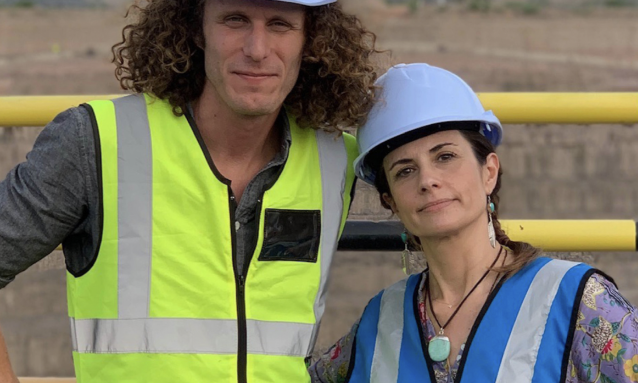
Interviews with Firth in the film are heavily weighted toward local women who have achieved a great level of success because of the country’s diamond industry. They include Naseem Lahri, managing director of Lucara Botswana, the first Motswana female to run a diamond mining company in Botswana. Pat Dambe, VP of De Beers Group, Susanne Swaniker, CFO Global Sightholders Sales, De Beers Group, and Kgalalelo Mokgweetsi, a community liaison with Lucara. One woman interviewed, Chandapiwa Monamati, operates some of the world’s largest mining trucks in the Debswana Orapa diamond mine, jointly owned by De Beers and the government of Botswana.
Lahri, Dambe and Mokgweetsi, attended the event and participated in a panel discussion following the film with Firth and Morgan. The panel was moderated by Alina Cho, television correspondent and book publishing editor. There were personal stories, community-driven stories and big picture data shared during the discussion.
For example, Lahri showed her ring to the audience set with a diamond from Botswana and described its significance.
“When I wear this ring,” she says, “I’ve empowered a child. I’ve empowered a community and a country as a whole. I carry pride with me every time I wear a Botswana diamond.”
Mokgweetsi added, “A woman in the village will tell you that I’m going to school, I’m going to the hospital, I’m going to university, or I’m going to work because of the diamonds. I put food on the table because of the diamonds.”
Dambe described how Botswana’s public-private partnerships compare with other countries.
“We have $7.2 billion for a population of 2.2 million, the size of Texas. There’s not a single country that has that. We’re considered to be the number one in terms of transparency and lack of corruption in the continent. We don’t have loans with the IMF or the World Bank. It’s all from one product.”
A good portion of the short film deals with how the country is working to diversify its economy, anticipating a time when mines will no longer produce diamonds. This effort is in the early stages and there are few concrete examples. However, the emphasis is that the country has the luxury of planning for a more diverse future because of the wealth created by the diamond industry. To highlight this, Firth interviews locals including Mokgweetsi who manages a community agricultural site that creates employment and provides nutritious fresh food for poorer communities, a teacher in one of the country’s elementary schools, and a man who manages a wildlife preserve. All of the projects are supported by diamond industry earnings.
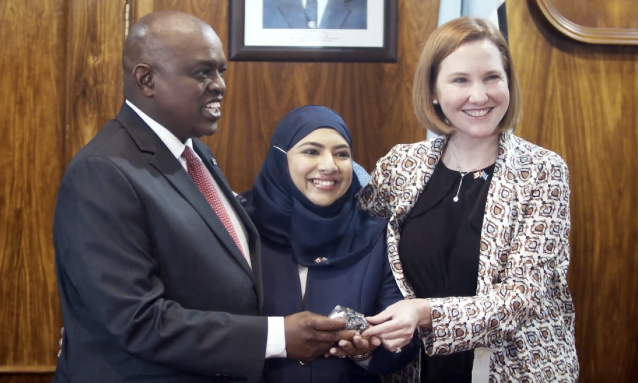
One of the highlights of the film is the showing of the 1,758-carat rough diamond named “Sewelô,” meaning “rare find” in the Botswana Tswana language. It is the second-largest rough diamond ever unearthed. It was found in the Karowe mine in Botswana, owned by Lucara. The diamond is jointly owned by Lucara, a diamond manufacturer named HB and Louis Vuitton, which will create a set of jewellery with it.
It’s an unprecedented partnership as rough diamonds are usually sold through dealers in the diamond trade before they are cut, polished and used for jewels. The diamond’s value hasn’t been released and is in fact largely unknown but, according to published reports, it will lack some of the gem-quality attributes of purer diamonds. One report estimates it in the low millions, a stark difference from the 1,111-carat diamond, called Lesedi La Rona, discovered in the same mine, which sold for $53 million to Graff.
However, the diamond is being promoted as a symbol of Botswana’s responsible use of its rich resources. The film appears to be part of this publicity push. The deal among Lucara, Louis Vuitton and HB was announced in January. A long, detailed piece about Lucara and the diamond industry in Botswana by the New Yorker was published a few days ago. Firth’s final interview in the film is with Botswana President, Mokgweetsi Masisi, which he talks about how the government shares the profits from diamonds. “Ethics is critical, environment stewardship is critical, workers’ rights are critical and what you actually do with the proceeds of what you get is telling of who you are and the values you hold. We do have challenges, we admit them and we want to face them head-on.”
As the film ends, Firth says, “Coming to Botswana I was nervous that I would find the imbalance I have witnessed elsewhere. When a single industry generates wealth and has disproportionate power, it can be very dangerous. In Bangladesh and other fast fashion ‘hot spots’ I have seen corporations abuse their power over a dependent economy and cut and run without any real exit plan.”
Firth continues, “But here in Botswana, I’ve seen a picture of what can happen when businesses operate in partnership with government and civil society, making long-term investments in collaboration with local communities to ensure that the benefits are truly shared with those on the ground.
I came here to look at a single supply chain. But as my visit ends I wonder if Botswana wondering if this country represents something even bigger – a new vision for doing business and if so, it is certainly something that needs should be protected with vigilance and integrity.”


